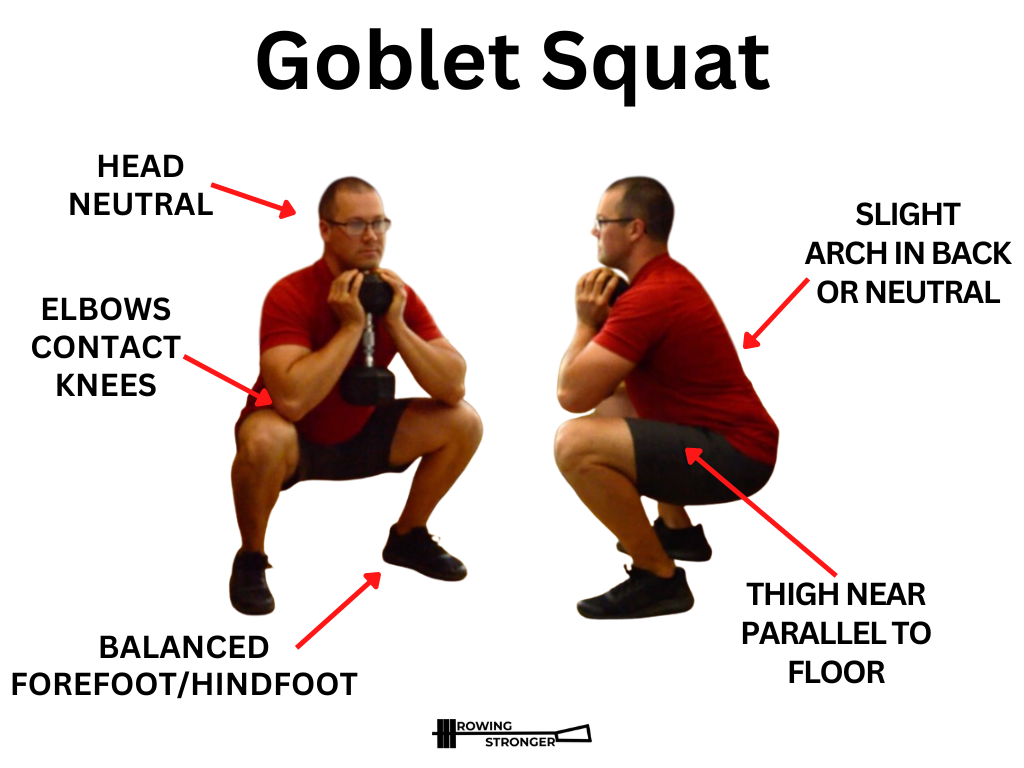Move of the Month: Goblet Squat
by GRP strength coach Will Ruth
My two-leg squat teaching and training progression begins with the bodyweight squat, then the goblet squat, then the barbell front squat, and rarely the back squat. Most athletes don’t find the bodyweight squat challenging for very long, but then there may be a gap before they’re ready for the heavier, more challenging loading of a barbell squat. The goblet squat is a great intermediate squat variation to add some loading and challenge, while still making it easier to achieve goal technique than a barbell squat.
Key technique pointers:
Distribute pressure evenly between forefoot (ball of the foot) and hindfoot (heel).
Aim for a bottom position of thighs approximately parallel to the floor, with torso upright and elbows on knees.
Push with the legs to stand up straight, keeping the torso at the same angle at the bottom position and top position. Shoulders and hips descend and ascend together.
Use a 2-to-1 lowering-to-lifting tempo, emphasizing tension control and stability on the lowering phase and acceleration with good technique on the lifting phase.
You can do goblet squats for as long as they are appropriately challenging and effective for your goals. It’s usually a good time to move to a barbell squat variation when you run out of dumbbell or kettlebell weights sufficiently challenging, or when you can’t hold enough weight in your hands to still challenge your legs. The front squat is my next exercise and final squat destination for most athletes. The barbell will be more challenging due to the side-to-side instability, and offers essentially unlimited loading.
More advanced lifters can still use the goblet squat for a few main reasons and benefits. I recommend it as a warm-up and mobility exercise, keeping the torso upright while sinking the hips between the knees in that deep bottom position squat. If you experience an injury, such as to the low back, the stable, slow tempo goblet squat is often the first form of lower body loading that becomes tolerable and productive before barbell exercises. Finally, I often use the goblet squat when we want to do higher rep two-leg squatting. We don’t do this often, but there are times when we want to crank out 15+ reps on a squat exercise. The goblet squat tends to keep athletes in a better position to focus on leg drive than a barbell squat.

